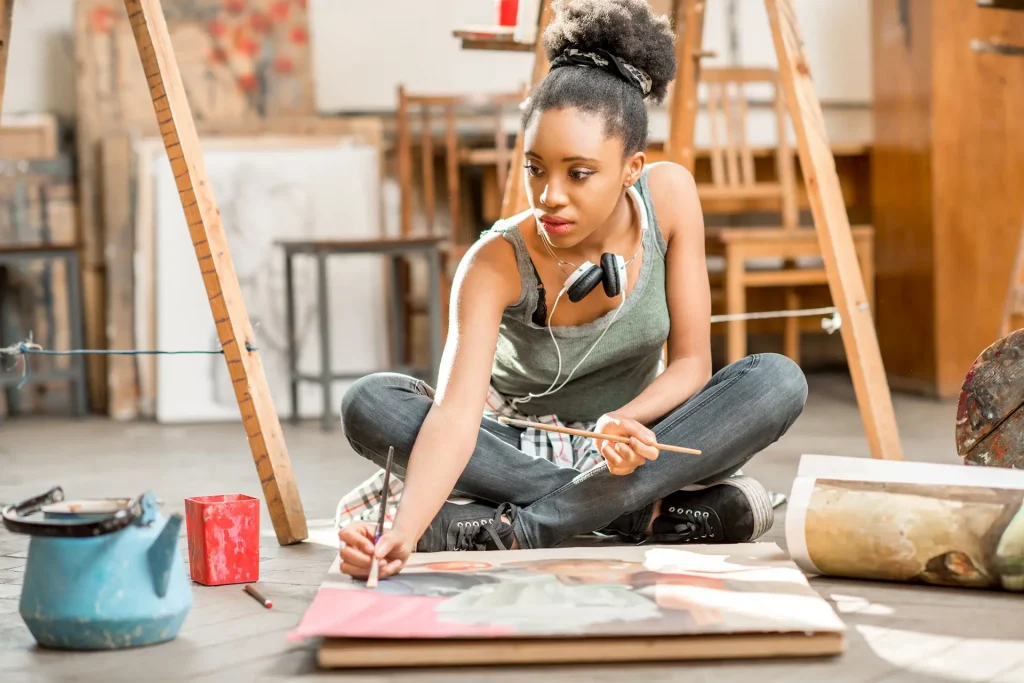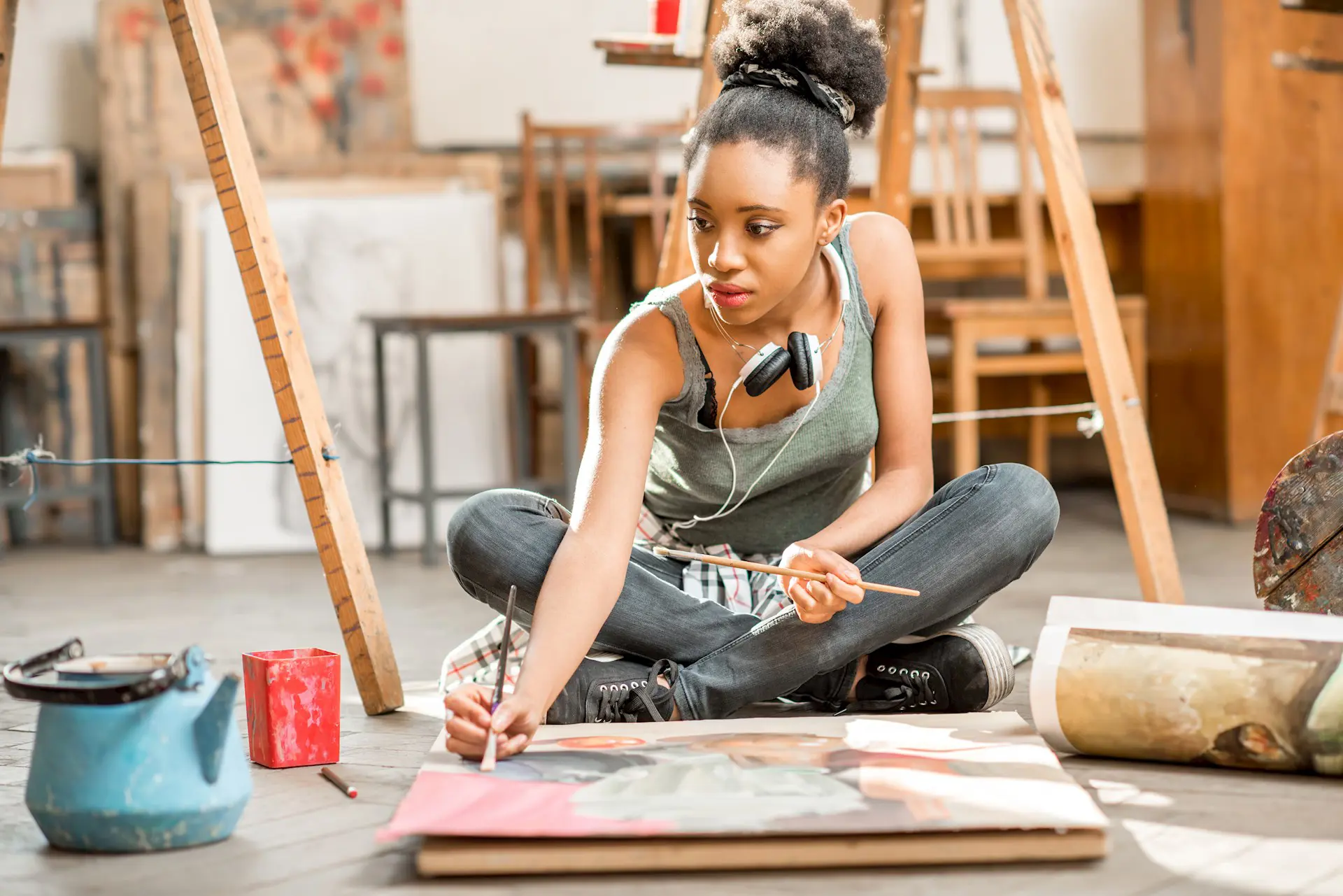
Parsons Fine Arts MFA Students Explore Themes Shaping 2025 Through Art

Navigating Flux Through Art in 2025: Healing, Presence, and the Emotional Center
As the world faces a tide of social, political, and environmental uncertainty, the role of contemporary art becomes more vital than ever. In 2025, artists are embracing this sense of flux—not to prescribe solutions, but to explore how to live within change and carry the weight it brings. The Parsons Fine Arts MFA Exhibition, titled Re:Turning, curated by P! Krishnamurthy, is a compelling testament to the power of emerging artists to confront, endure, and transform the chaos of this moment into contemplation, critique, and connection.
Embodying the Burden
Hannah Bang’s four-hour video performance, What is Burden? (2025), sets the emotional tone of the show. Through prolonged engagement with her medium—as the performer draws until the paper tears—Bang meditates on endurance, fragility, and the invisible lines between persistence and collapse. The act is as symbolic as it is literal: a quiet rebellion against passivity, an assertion that even within destruction, creation continues.
Playfully Balanced Disequilibrium
Andrew Samuel Harrison brings his own body into conversation with structural form in Hypervisibility: Systems of Support 5 (2024–25), a concrete slab improbably leaning against a wall. Connected to his lived experience with Poland Syndrome—a congenital condition affecting one side of his body—the sculpture dances with control and vulnerability. Does it stand, or is it about to fall? The viewer is caught in this subtle tension, mirroring the artist’s own internal navigation of asymmetry.
The Global Entanglement of Hair
In Zulfon Ki Zanjeer (Chains of Tresses, 2025), Sumaiya Saiyed explores themes of commodification, gendered labor, and global inequity through a kinetic sculpture of braiding hair. The piece mechanically lifts and drops the braid, mimicking the cycles of hair harvesting and market exploitation in Pakistan and Southeast Asia. The rhythm evokes the persistent exploitation of women’s bodies by capitalist systems, while also acknowledging the strength and tradition embodied in the braid itself.
Memory in Motion: A Coffee Ceremony
Through her participatory installation still we are water (2023–25), Yeabsera Tab channels heritage and collective memory. Scattered ceramic coffee cups and a projected video of hulls being planted reference her upbringing in Addis Ababa, Ethiopia, while a live “coffee circle” offered during the exhibition’s run revives the ritual of Ethiopian communal coffee ceremonies. In a year marked by divisions and dislocation, Tab enacts healing through intimate hospitality and ancestral rhythms.
Material Explorations of Presence and Imbalance
Other works in the exhibition expand on these themes, reinforcing the diversity and intensity of the artists’ inner worlds. For instance:
– Felisa Nguyen’s Promise of an Orchid (2024) and Work for an Axe (2025) explore diasporic identity and botanical symbolism, suggesting resilience and transformation through delicate materials and layered forms.
– Shangari Mwashighadi’s Untitled assemblage (2025) embraces texture and symbolism to explore themes of identity and displacement.
– Qasim Ali Hussain’s video work Between Flesh & Spirit: The Nafs Awakens (2025) spiritually interrogates internal conflict and moral awakening through rich visual storytelling.
– Spencer Strauss’s The Middle (2025) and Danielle Sargeant’s Does Water Carry Memory? (2025) raise potent questions about temporality, space, and collective experience through mixed media and spatial interventions.
The Emotional Function of Contemporary Art
Rather than merely criticizing injustice or offering aesthetic pleasure, the artists of Re:Turning are interested in emotional strategy—how to sit with grief, adapt to instability, and find shared meaning. Their work doesn’t give easy answers, but instead proposes rituals, material metaphors, and symbolic acts. These responses range from generating tension (as in Harrison’s piece), to locating the sacred in the everyday (as in Tab’s ceremony), to visually processing exploitation and healing (as in Saiyed’s kinetic sculpture).
The Ethiopian proverb “The same water never runs into the same river” underscores the exhibition’s reflective thesis: if we cannot freeze time or reverse disruption, we can recalibrate our response to it. These artists offer us aesthetic and emotional frameworks for surviving flux—not by retreating, but by embracing tension as a source of creativity and connection.
Conclusion: Re:Turning as Compass
As 2025 unfolds into further uncertainty, Re:Turning offers a map—not of where to go, but how to move. Through texture, duration, gesture, and performance, these works show the many ways in which we can recalibrate our emotional centers. In a world that often feels untethered, this MFA exhibition suggests that art can anchor us, bear witness, and even guide us gently toward each other.
Re:Turning is on view at the Anna-Maria and Stephen Kellen Gallery at The New School through